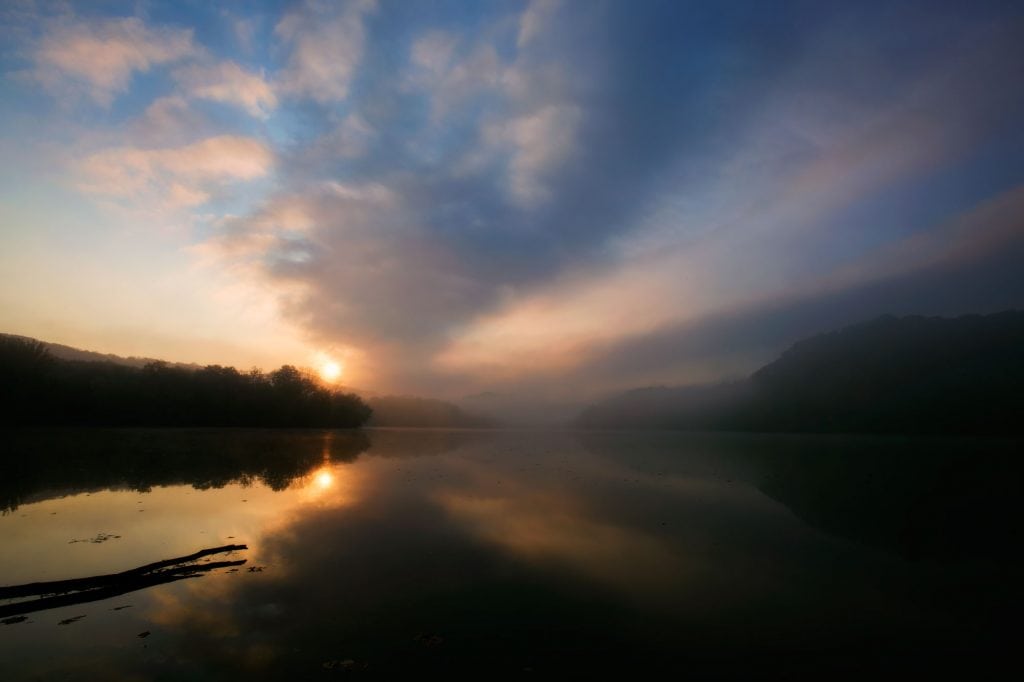“Sunrise at Radnor Lake” by Robin Conover
Canon EOS 6D, 16-35 mm, 2.8 L USM lens,
ISO 200, ƒ27 at 1/50 sec., Gitzo tripod
I love to be outside during the fall. You can literally feel, see and smell the season changing. If you know what to watch for, you can witness a flurry of activity as Mother Nature begins to prepare for the fast-approaching winter months.The crisp air and cooler temperatures signal the approaching winter as migratory birds begin to arrive from the North. The fog that gives the Great Smoky Mountains their name often rolls in and out as the sun sets and rises.
The crisp air and cooler temperatures signal the approaching winter as migratory birds begin to arrive from the North. The fog that gives the Great Smoky Mountains their name often rolls in and out as the sun sets and rises.
Dropping temperatures and shorter days signal trees to slow and then stop producing chlorophyl, which makes their leaves green. As the chlorophyl leaches out, the brilliant colors of fall begin to appear.
You will see more wildlife activity wherever there is food to forage. Oak and persimmon trees in particular, with their acorns and sweet fruit, attract deer and bears. The deer rut will also be on soon.
For your best photography opportunities this fall, try to plan your outings based on the time of day and the weather. Early mornings and late afternoons will give you the best chance for dramatic lighting. Oftentimes, there’s a stillness at sunrise that enhances reflections in the calm water.
As the sun rises, you may want to move on to other opportunities such as river reflections. The sunlight will bounce off the trees bordering the river, reflecting brilliant colors back onto the water. These conditions beg you to use a polarizer, tripod and slow exposure. Experimenting with shutter speeds can create very interesting abstracts.
Once the sun is overhead, the light can be very contrasty. While you may find a few opportunities, as the strong sunlight filters through backlighting colorful leaves, harsh midday light often leads to the best time to scout out locations for the golden-hour light at sunset.
Always be on the lookout for light. You never know when the elements will combine to allow you to capture a successful photograph, but if you aren’t out there looking for these moments, you’ll never find them.
The morning I captured this sunrise was almost too clear. Just as I was about to move on to other options, I noticed a few clouds filtering in from behind me moving toward the lake. I decided to wait a few minutes to see what would happen.
The clouds moved over just in time to catch some light from the sun and meet the fog as it burned off the lake. Within 20 minutes, the scene changed from mediocre to magnificent, and I was lucky enough to see it!



